Back in Bhuj, I relaxed back into the Gangaram Hotel and enjoyed meeting Kim, an American businesswoman from Chicago who was importing Kutch crafts into the USA. She in turn introduced me to two Japanese girls, one who was also importing crafts into Japan and the other who was just interested in them. Together we traded information on the area.
The next morning I was met at the appointed time by Kishor in his auto rickshaw
. Kishore was smiling, about my age and had reasonable broken English. As agreed, we immediately left the hotel and wound our way through the dusty, busy and chaotic streets of Bhuj towards the town of Bhujodi about 10 kms away. In a tuk tuk of course this took a while, and it was surprisingly cold so I froze in the back.
At Bhujodi we visited the Handloom Design Centre. This seemed not to be the type of place which I had hoped to visit and I was somewhat worried by the obvious commercial nature of this stop. Actually I need not have worried as this was only stop that looked remotely commercial in the next two days. Kishor had included this stop as he believed this was where I wanted to go and from here on it was small villages and independent artisans.
The Hand Design Centre had several handlooms in a large warehouse and produced cloths that appeared to be commercial and not representative of any local culture (to my untrained eye). I was glad to leave, despite the hospitable welcome. Back in the Tuk Tuk we progressed on until we arrived at a small village called Paddhar. Here we had a break for chai with all the local Ribari men dressed in their flowing white robes and huge white turbans. They looked great in their white baggy pleated cotton trousers which abruptly finish tightly just about the ankles
. Some had a blanket wrapped over their shoulders and wore white waist coats. Others sported huge triumphant handle bar moustaches. I caused quite a stir at their chai stand.
In order to see the women we had to leave the Chai stand and we drove through the narrow windy streets filled with wandering cattle until we came across a small market. Here there were plenty of women dressed in black jackets and some with open backed blouses. Some also had tie dyed head cloths, others sported giant silver necklaces and many white bangles (which were once ivory said Kishor). This was more like it. We also went to a communal NGO for women’s crafts but it was closed. Next to the building a school was emptying for lunch and I was invited in to meet the children. Many were dressed in miniature outfits that the adults had been wearing in the market and at the chai stall. Some were just dressed in beautifully embroidery tops with small mirrors included in the embroidery. This style of art is what the region is famous for and I was suitably impressed.
Having been thwarted by the closed NGO, someone at the school said it was a holiday, we progressed onwards to the next village, down a narrow tarmac lane. Here there were many old men dressed in the flowing Ribari robes and several demanded their photos were taken
. In one house one woman produced a piece of 40 year old embroidery which I purchased.
After a delicious road side meal in a truck stop with an amazing buffalo curd masala dip we headed off to Dhaneti to see another Embroidery artisan family called Parmarth. They produced the most exquisite and delicate embroidery on silk. Some piece taking months and they had won many awards for their work. It was excellent and they also gave me a quick demonstration in their house which doubled as their workshop and retail outlet.
Next as the sun dropped down and the icy desert winds returned we arrived in the small village of Ajrakhpur where its most famous artisan still carries out block painting which was started by his family some nine generations ago. Dr Ismail Mohammed Khatri was an engaging man and happy for me to walk around his workshop and organic natural dye production. The earthquake had completely destroyed his original premises and so he had moved to Ajrakhpur, but his process and techniques were unchanged. The blocks and the skill of his employees were a joy to see and watch. The dyes, especially the blue Indigo was very impressive.
The Tuk Tuk managed to get me back to the Gangaram just after dark and it was exhausting but an excellent day to the east of Bhuj
. I was now wondering what the north and northwest villages would hold for me and Kishor the following day.
The next morning it was equally cold as we both set off. But this time I was prepared, wearing some clothes I had not worn since the Naga Hills, plus I had asked for a later departure time. Past the airport and numerous military bases we went on the road towards Pakistan. The vegetation became dominated by those feral acacia trees which are the bane of any Indian environmentalist and ecologist. It was also sandy and dusty but the roads were good and several new bridges crossed dry river beds. The first village we stopped at was near Sumrasar Shekh, where some new circular round houses had been built to house the Ahr people who were displaced after the earthquake. On a brief walk around the village all the women told me (through Kishor) that they were grateful for this new accommodation and it was much better than what they had lived in before
. The were so much better that many other Ahr people were now coming to join this settlement, building rudimentary dwellings next to these circular roundhouses. Here the women were similarly dressed to those Ribari women and they wore bright coloured shawls with bright coloured designed and heavy face jewellery. The family that we visited here were artisans that produced embroidery, but it was not of a quality matching that which I had seen the day before, nevertheless it was interesting.
i think that Kishor was aware that I was not as impressed and soon we were travelling a few more kilometres north to the actual town of Sumrasar Sheikh, where we met Ramji from Tana Bana weaving. His hand loomed woven turbans were fabulous and his family had also been doing this for generations. What was also interesting was the man. Ramji was a very engaging personality, proud of his artisanal skills, proud of his family history and witty with perfect English. I liked him and especially his philosophy of only using dessert colours - white, sand yellow, beige and - of course - deep blue (inspired by the blue moon festival).
After I had purchased one of his turbans he suggested accompanying me around the corner to meet a family from the Sodah people who made a unique style of embroidery. This was interesting and the family were super friendly, but their sparse style of embroidery on white cotton did not do it for me.
Next we set off on a long leg of the journey directly west to the town of Nirona, actually not far from the place I had been birding with Jugal three days previously. Here we had a quick bite to eat with a family whom Kishor knew before visiting a group of villagers specialising in Lac wooden utensils. This was quite interesting, but soon afterwards we were knocking at the door of the leading Rogan artist.
Rogan is a dying art form involving mixing locally grown caster oil with paint and then pouring it freehand on silk. This village is the only one left in Nirona practicing this art and all practitioners are related. I was sitting in front of Sumar D Khatri, a national award winner, who had received national publicity earlier in the year when Modi gave Obama one of his pictures to commemorate his visit to the USA. Sumar was proud of his heritage, his skills and the unique traditional of Rogan art explaining that the Khatri family are the only practitioners in India and he believed the only ones in the India, Pakistan and Afghanistan. As the art came from Persia he said that the family understood that there could be Rogan artisans there, but that currently they were unaware of the existence of any there too. He also added that the family keeps the skills private, just amongst themselves.
He gave me a demonstration mixing the caster oil and the paint and then dripping or pouring the paint on the silk via a sort of metal pen. The skill was in getting the flow right and the freehand design. I was mesmerised and succumbed to the purchase of a tree of life picture. It was another great day, but we still had one visit to go, the bell makers of Nirona. Kishore took me to meet a family producing small feels out of old fridge parts and then coating them in copper for the sound. The chimes were quite Christmas like and elegant, and the whole process was shown to me from fridge to bell.
It was a cold, long drive back To the Gangaram and I agreed to use Kishor when I returned to Bhuj in the New Year. He had been excellent.
Embroidery, Rogan, Block Printing, Tribes
Wednesday, December 17, 2014
 Bhuj, Gujarat, India
Bhuj, Gujarat, India
Other Entries
-
73Finches, Volcanos, Tortoises & Darwin
Sep 03105 days prior Puerto Ayora, Ecuadorphoto_camera7videocam 0comment 0
Puerto Ayora, Ecuadorphoto_camera7videocam 0comment 0 -
74Sharks, Penguins, Sea Lions and Boobys
Sep 1098 days prior Puerto Villamil, Ecuadorphoto_camera6videocam 0comment 0
Puerto Villamil, Ecuadorphoto_camera6videocam 0comment 0 -
75Frigates, Poor Service, Iguanas, Diving Pelicans
Sep 1395 days prior Guayaquil, Ecuadorphoto_camera5videocam 0comment 0
Guayaquil, Ecuadorphoto_camera5videocam 0comment 0 -
76Car Crash, Chachas, Mules and Blood
Sep 1890 days prior Chachapoyas, Peruphoto_camera4videocam 0comment 0
Chachapoyas, Peruphoto_camera4videocam 0comment 0 -
77Kuelap, Mummies, Ruins, Hummingbirds
Sep 2583 days prior Leymebamba, Peruphoto_camera6videocam 0comment 0
Leymebamba, Peruphoto_camera6videocam 0comment 0 -
78Sarcophagi, Fountains of Blood, Horseback
Sep 2880 days prior Cuispes, Peruphoto_camera3videocam 0comment 0
Cuispes, Peruphoto_camera3videocam 0comment 0 -
79Waterfalls, Rain and Loud Peruvian Pop Music
Sep 2979 days prior Pedro Ruiz, Peruphoto_camera4videocam 0comment 0
Pedro Ruiz, Peruphoto_camera4videocam 0comment 0 -
80Hummingbirds, Orchids, Coffee and Stomach Bugs
Oct 0276 days prior Moyobamba, Peruphoto_camera5videocam 0comment 0
Moyobamba, Peruphoto_camera5videocam 0comment 0 -
81Battlefields, Zulus, 1879, Leaving South Africa
Oct 1860 days prior Dundee, South Africaphoto_camera4videocam 0comment 0
Dundee, South Africaphoto_camera4videocam 0comment 0 -
82Mr India, X Factor Naga style, Exotic Food
Nov 0641 days prior Mokokchung, Indiaphoto_camera5videocam 0comment 0
Mokokchung, Indiaphoto_camera5videocam 0comment 0 -
83Burma, Headhunters, Opium & Dust
Nov 0938 days prior Launghe, Myanmarphoto_camera4videocam 0comment 0
Launghe, Myanmarphoto_camera4videocam 0comment 0 -
84History, bad guesthouses, hills, Wakching
Nov 1433 days prior Mon, Indiaphoto_camera4videocam 0comment 0
Mon, Indiaphoto_camera4videocam 0comment 0 -
85Skulls, Fertility, Opium, Anghs, Warriors
Nov 1730 days prior Shengnya, Indiaphoto_camera5videocam 0comment 0
Shengnya, Indiaphoto_camera5videocam 0comment 0 -
86Elders, Changs, Culture, Families and Skulls
Nov 2225 days prior Tuensang, Indiaphoto_camera5videocam 0comment 0
Tuensang, Indiaphoto_camera5videocam 0comment 0 -
87Sangai Festival - Kang, Hockey/Wrestling, Polo etc
Nov 2819 days prior Imphal, Indiaphoto_camera5videocam 0comment 0
Imphal, Indiaphoto_camera5videocam 0comment 0 -
88Hornbill Festival, Loin Looms & Naga Culture
Dec 107 days prior Kohima, Indiaphoto_camera10videocam 0comment 0
Kohima, Indiaphoto_camera10videocam 0comment 0 -
89Birds, Rubbish, Grasslands, Rubble, Tribes etc
Dec 143 days prior Nakhatrana , Indiaphoto_camera5videocam 0comment 0
Nakhatrana , Indiaphoto_camera5videocam 0comment 0 -
90Embroidery, Rogan, Block Printing, Tribes
Dec 17 Bhuj, Indiaphoto_camera5videocam 0comment 0
Bhuj, Indiaphoto_camera5videocam 0comment 0 -
91Lions, Nitin, Bird Spotting, Sleeper Bus Part 1
Dec 214 days later Gir, Indiaphoto_camera6videocam 0comment 0
Gir, Indiaphoto_camera6videocam 0comment 0 -
92Island Life, Portuguese Colony, Christmas
Dec 258 days later Diu, Indiaphoto_camera4videocam 0comment 0
Diu, Indiaphoto_camera4videocam 0comment 0 -
93Restaurant Tombs, Mosques, Markets
Dec 2811 days later Ahmedabad, Indiaphoto_camera5videocam 0comment 0
Ahmedabad, Indiaphoto_camera5videocam 0comment 0 -
94Birds, NYE, Dhows, Feral Dogs, Shaves
Dec 3114 days later Mandvi, Indiaphoto_camera6videocam 0comment 0
Mandvi, Indiaphoto_camera6videocam 0comment 0 -
95Blue Moon, Salt Flats, Crafts
Jan 0216 days later Bhujodi, Indiaphoto_camera5videocam 0comment 0
Bhujodi, Indiaphoto_camera5videocam 0comment 0 -
96Calico Musuem, Festival Prep, Street Life
Jan 0620 days later Ahmedabad, Indiaphoto_camera5videocam 0comment 0
Ahmedabad, Indiaphoto_camera5videocam 0comment 0 -
97Leopards, Shepherds, Turbans and Aristocrats
Jan 1125 days later Bhenswara, Indiaphoto_camera5videocam 0comment 0
Bhenswara, Indiaphoto_camera5videocam 0comment 0 -
98Birds, Fog, Bad Internet, Old Friends
Jan 1428 days later Jodhpur, Indiaphoto_camera7videocam 0comment 0
Jodhpur, Indiaphoto_camera7videocam 0comment 0 -
99Tigers Tigers Tigers Tigers and oh Tigers
Jan 1731 days later Sawai Madhopur, Indiaphoto_camera6videocam 0comment 0
Sawai Madhopur, Indiaphoto_camera6videocam 0comment 0 -
100Trains, Rodents, Rip offs, Delhi and Gentle
Jan 2539 days later Delhi, Indiaphoto_camera3videocam 0comment 0
Delhi, Indiaphoto_camera3videocam 0comment 0 -
101Sand, Masks, Forest Man, Monks & Bamboo
Feb 0247 days later Majuli, Indiaphoto_camera8videocam 0comment 0
Majuli, Indiaphoto_camera8videocam 0comment 0 -
102Julius, Gibbons, Park Fees, Tea & Gymkhana
Feb 0550 days later Jorhat, Indiaphoto_camera5videocam 0comment 0
Jorhat, Indiaphoto_camera5videocam 0comment 0 -
103Houseboats, Dolphins, Rain and Animal Planet
Feb 1055 days later Tinsukia, Indiaphoto_camera5videocam 0comment 0
Tinsukia, Indiaphoto_camera5videocam 0comment 0 -
104Tezu family home, TV Mike, Huts, Cows, River Wash
Feb 1459 days later Tezu, Indiaphoto_camera5videocam 0comment 0
Tezu, Indiaphoto_camera5videocam 0comment 0 -
105Sumos, Boulders, Oranges, Idu Mishmi
Feb 1762 days later Roing, Indiaphoto_camera5videocam 0comment 0
Roing, Indiaphoto_camera5videocam 0comment 0 -
106Motorbikes, Idu Mishmi, Hats, Illness, Scenary
Feb 1964 days later Anini, Indiaphoto_camera9videocam 0comment 0
Anini, Indiaphoto_camera9videocam 0comment 0 -
107Nyokum Yullo, Nishi people, ferries, chain dance
Feb 2267 days later Itanagar, Indiaphoto_camera5videocam 0comment 0
Itanagar, Indiaphoto_camera5videocam 0comment 0 -
108Paddies, Plugs, Tattoos, Weddings, Bamboo, Spirits
Feb 2469 days later Ziro, Indiaphoto_camera5videocam 0comment 0
Ziro, Indiaphoto_camera5videocam 0comment 0

 Bhuj, Gujarat, India
Bhuj, Gujarat, India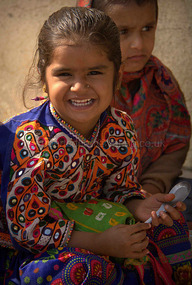
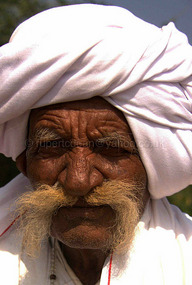
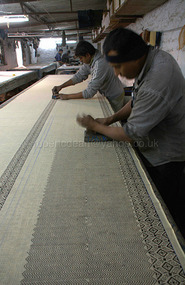
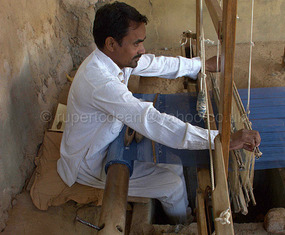
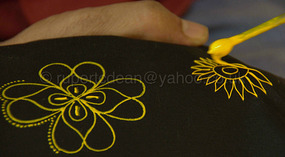





2025-05-22